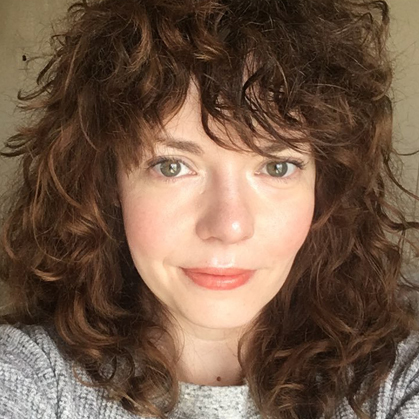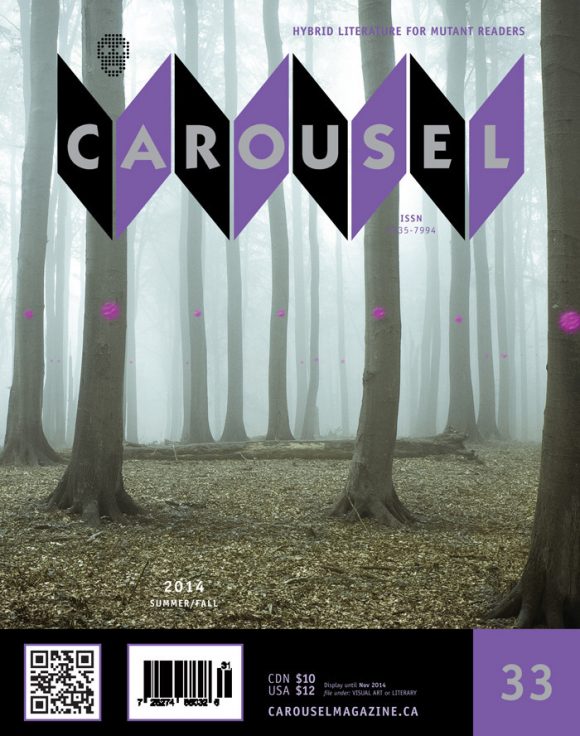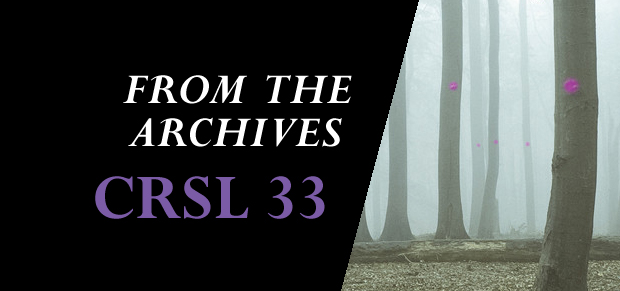From the Archive: Bess Winter (CAROUSEL 33)
BESS WINTER
Daguerreotypes
1/ Hidden Mother
A slight mother could be disguised as a swaddling blanket or a bassinet. A larger mother was an overstuffed chair, a settee, an imposing piece of furniture. Careless practitioners might toss a rug over the mother, barely cloaking her shape. Ill-disguised mothers looked like bodies smuggled in the night. But such mistakes were for amateurs. Sargent was an expert at hiding mothers.
For instance, once he was commissioned to photograph a child named Eustace: a consumptive whose eyes were ringed blue as plums and whose whoop rattled the windowpanes. The boy teetered on the edge of death like a drip fattening on the rim of a faucet.
It will be hard to photograph the boy, said Sargent to the mother, for all his whooping.
And the mother pressed her puffy gloved hands on the boy’s shoulders and hugged him down to two-thirds his size, whereupon he let out a small satisfied wheeze. Sargent cloaked that mother in a bearskin, hands-in-paws, face shadowed by a jagged row of teeth. The tintype was a sickly boy in the clutches of a stiff bear rug.
Another dumpling-faced infant could not abide anything but steady and consistent patting on her rump. She howled when left alone. The answer, said Sargent: a christening gown, made giant enough for the mother. The baby’s head just peaked above the frilly tent. In the tintype, she smiled.
And one child was deceased. Sargent asked the mother if she might not like to be in the photo with the limp child, unhidden. But she shook her head and swiped the last sheen away from her daughter’s brow. That mother was the soft inside of the casket, draped in silk.
There was also the phenomenon of the mother remaining hidden well after the photograph had been snapped and developed and framed and set on a mantle. This happened often enough in Sargent’s line of work. Children would grow into adolescence with the love and support of an ottoman or a few yards of muslin. Several mothers, once he’d cloaked them for a photograph, had confided in Sargent that the disguise might make their mothering easier. A child might never grow to resent the constant presence of a large throw pillow. Might never notice it at all.
Only once did Sargent receive a complaint. Years of success had allowed him to move into a grander studio with more natural light, and he ushered a parade of mothers and children through it daily. Late afternoon, at the golden hour, a young man, seventeen or eighteen years old, entered the studio and flopped onto Sargent’s couch. The boy was milk-pale, his eyes ringed a deep violet. He was pursued by a bear rug that sat beside him on the couch and crossed its legs politely at the ankles.
You must stop her! Said the boy.
The bear gave him a piteous look.
Sargent considered the request. In retrospect, the bearskin had been a bold statement. But years had shrunk the skin to accommodate the mother, or the mother had grown to fit the skin. Sargent could not imagine how to peel it from her. Besides, he feared the teeth.
2/ Lace
This was his earliest trick, but he never tired of repeating it: a cutting of lace on a contact print, left for some moments in the sun. Then the exposure was stopped, and the impression of the lace was there always, ghosting white against a burned-dark background. He made sure to perform this trick with every variation of lace he came across, to see how each might reproduce photographically. Inevitably, the lace came attached to women.
His first cutting was separated from the hem of a petticoat. He did not ask the petticoat-owner’s permission; he was already underneath the petticoat and merely plucked a nimble pair of scissors from his breast pocket while he was busy at work on other matters. This lace was simple and cheap; sun poked through its holes with ease and made a clear impression on the contact paper. He found he tired of the impression immediately after making it. Even now, he cannot remember the name of its owner.
Then he collected society laces: soft, complex. Some came from Paris and some were hand-hewn by American dressmakers. Some were from cuffs and some from bibs and some from pillowcases. Each carried its own scent — rosewater, ash — though this was beyond his ability to reproduce.
The thing about lace — the very thing — was that to photograph it in his signature way was also to make it, almost exact as the original, only with more efficiency. Where women with tired hands labored days or weeks, he harnessed the power of the sun — the pencil of nature, he called it — to draw it in minutes.
The widow’s lace that came from his mother’s veil made an even stronger impression. The black of it beat back the sun. When he removed it from the contact paper, its twin gleamed crisp and white like the wedding gown she kept tucked inside a trunk at the foot of her bed.
The pencil of nature! He sounded it out in big round vowels, like for a child or a pet. He pointed to his work. The pencil of nature! Beside him, his mother held the photograph he’d made, and, with an old and jet-ringed finger, traced and retraced the impression of her widow’s weeds.

Daguerreotypes
appeared in CAROUSEL 33 (2014) — buy it here

